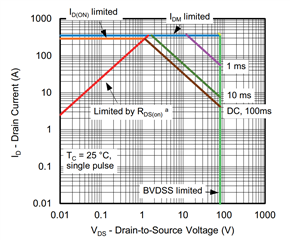Tool/software:
I am referring to the TIDA-010242 reference design for my 28V system. My system requires 500W. As I understand from the disturbance limits information, the minimum voltage is 12V (1s).
Do I need to ensure that the system can handle 500/12 = 42A?
Additionally, according to the TIDA-010242 design, what parameters should I consider to achieve my target?






